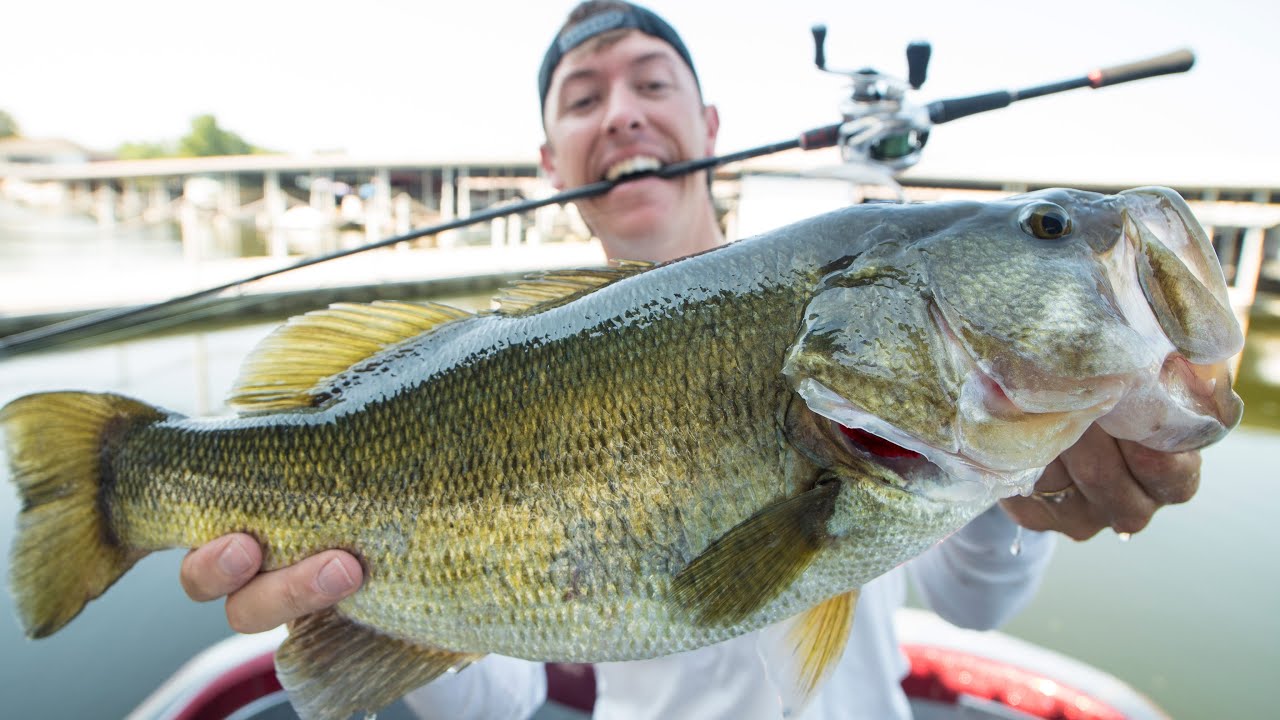If it’s May, then you know the spinnerbait season at Lake Fork is over. In fact, if you’re a regular at Fork, you know bass essentially stopped chasing blade baits as long ago as mid-March, and not because they left the weedy, stump-filled shallows. “There’s no doubt the bass become lure-shy,” acknowledges McCarty, the senior-most guide on Fork, “and I believe a spinnerbait is the first lure the fish stop hitting, primarily because they see so many of them.”
McCarty’s observation is not confined to Lake Fork, either. Bass fishermen throughout the nation believe the heavy fishing pressure exerted on popular lakes everywhere is causing bass to become lure-shy. Sometimes bass stop hitting a particular lure after only a day or so, while at other times it seems to take them several weeks to stop biting. Tournament pros frequently notice a change in bass activity during the course of a three-day event.
While spinnerbaits appear to be among the first lures bass stop hitting, McCarty has seen Lake Fork bass become conditioned to buzz baits, jigging spoons, and even to plastic worms.
“The best way to combat lure-shyness is to change lures completely,” advises the popular guide, whose resume includes two Bass Masters Classic appearances as well as three entries in the Bud ShareLunker program (bass weighing 13 pounds or more). “From a spinnerbait you might change to a crankbait, or from a spoon you could switch to a heavy plastic grub.
“Sometimes, simply changing your retrieve speed can be enough to generate strikes again, or if you’re fishing clear water, you can switch to a different color of soft plastics to get bass interested again.
“There are no iron-clad rules to follow when you encounter lure-shy bass,” he continues. “During the 1984 Bass Masters Classic on the Arkansas River, Rick Clunn caught more than 50 pounds of bass in two days with a Bomber crankbait from an area, but when he went back the third day, those fish totally refused to hit. Clunn changed to a Shad Rap crankbait that has a different action, and caught his heaviest stringer of the tournament from the very same water.”
One of the first things McCarty suggests fishermen do when they realize bass have stopped hitting spinnerbaits is to look for slightly different water conditions. Water that is more off-colored, for example, tends to pull bass away from shallow cover. Windy conditions likewise make bass more active away from cover.
Another suggestion is to change from a spinnerbait to a crankbait. Bass don’t see nearly as many crankbaits in brush-filled water, so they’re less likely to be conditioned to them, and numerous manufacturers now offer small, square-billed “brush baits” that can be fished effectively in such situations.
“If you’re fishing a spinnerbait over vegetation and the bass lose interest, you may do better with a lipless crankbait,” McCarty continues, “and if that doesn’t work, consider a lure like Mann’s One-Minus, the shallow-running crankbait you can fish over vegetation.
“Anytime you know bass are in shallow water around cover, this crankbait seems to do well. It’s just a cast-and-wind lure, and it triggers reflex strikes.”
One tactic McCarty often employs when using these types of crankbaits is to attack the fish. He casts beyond the obvious cover and runs the lure right into the zone he believes the bass is using; the bass will either have to flee, or strike the bait.
The Lake Fork guide has also observed that bass will shy away from soft plastics, particularly Texas rigged worms. He does not feel the bass become conditioned to the worms themselves but rather to the noise of the lure’s entry into the water and the speed of the lure’s fall.
“This may be one reason slow-falling wacky worms are so effective, not just in the spring but in the summer and fall, as well,” he notes. “The Yamamoto Senko also has a completely different speed of fall, and so do the Slug-Go type lures, and this is probably one reason these lures catch so many bass.
“In fact, it isn’t unusual for an angler in the back of the boat fishing a Senko to out-fish his partner in the front of the boat who is flipping a Texas rig.”
Several years ago after McCarty felt deep water bass in one of his favorite holes on Fork were getting conditioned to seeing his plastic worms too often, he started fishing a deep spinnerbait. The technique he developed was to cast, let the spinnerbait settle to the bottom, then rip it off the bottom by reeling as fast as possible.
“You can fish the worm first, then the spinnerbait,” he laughs, “but if they stop hitting the spinnerbait, you can’t start catching them again on the worm. You simply have to go to different water.”
When bass appeared to become conditioned to his jigging spoons – which happened in a single day – McCarty changed to a plastic grub with a two-ounce jighead, fishing it the same way and in the same water. The bass started hitting it immediately.
“We can’t really say bass actually learn to recognize a particular lure and decide it’s not safe to hit it,” McCarty emphasizes, “but I don’t believe there is any question that bass do become conditioned to certain lures and they do stop striking. The louder and the more vibration a lure puts off, the faster a bass does become lure-shy.
“Sometimes the solution is something as easy as slowing down or speeding up your presentation, but most of the time, a complete change of lures brings better results. Just remember, the bass are nearly always still in the same place. All they need is to see something that looks and sounds different.”

